We may not have the course you’re looking for. If you enquire or give us a call on 01344203999 and speak to our training experts, we may still be able to help with your training requirements.
We ensure quality, budget-alignment, and timely delivery by our expert instructors.
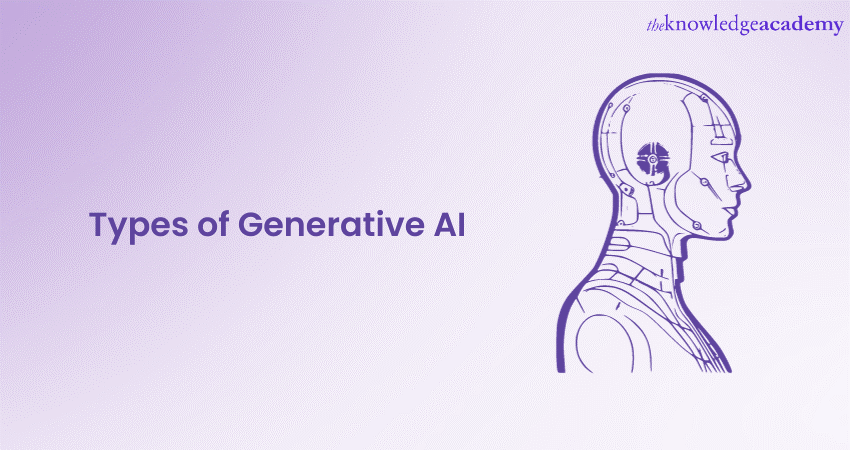
Generative AI in Artificial Intelligence has unleashed a revolution in how machines create and innovate. The various Types of Generative AI include Generative Adversarial Networks (GANs) that produce stunningly realistic images to the sophisticated Transformer models like GPT, renowned for generating coherent and contextually rich text.
These types also include Variational Autoencoders (VAEs) and Recurrent Neural Networks (RNNs), which are essential in transforming data into novel creations. In this blog, we will discuss these Types of Generative AI and how they are unique in their functionality. Read on further to know more!
Table of Contents
1) What are Generative AI models?
2) Different Types of Generative AI
a) Generative Adversarial Networks (GANs)
b) Variational Autoencoders (VAEs)
c) Recurrent Neural Networks (RNNs)
d) Transformer-based models
e) Autoregressive models
f) Reinforcement learning for generative tasks
3) Conclusion
What are Generative AI Models?
Generative AI models are advanced algorithms designed to create new, original content. These models are powered by Machine Learning Techniques, particularly Deep Learning, which learns from large datasets to understand patterns, styles, and structures. Once trained, they can generate text, images, music, or other data types that resemble the training material but are entirely new creations.
Key examples include Generative Adversarial Networks (GANs), used for realistic image generation, and models like Generative Pre-trained Transformers (GPT), which excel in producing coherent and contextually relevant text. These models are transforming how machines approach creativity and problem-solving across various domains.
Different Types of Generative AI
To know in detail about Generative AI, let us discuss its various types:
Generative Adversarial Networks (GANs)
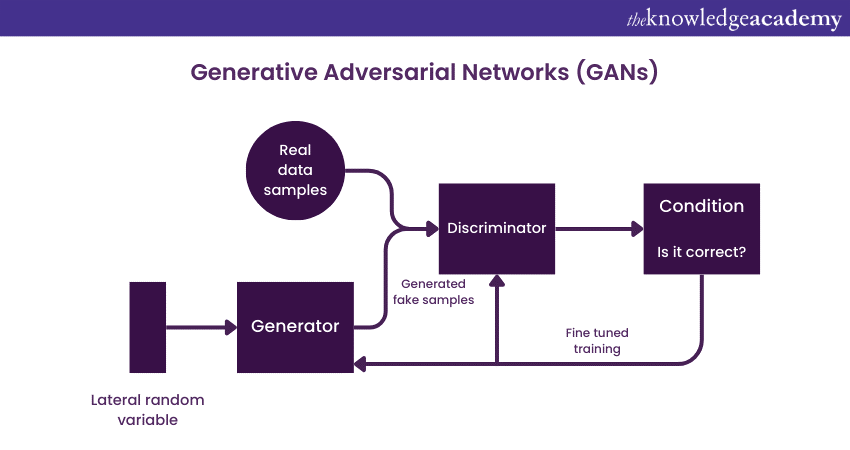
Generative Adversarial Networks (GANs) can be referred to as belonging to a class of AI algorithms that are used in unsupervised Machine Learning. This is implemented by two neural networks contesting each other in a zero-sum game framework. This technique was introduced by Ian Goodfellow and his colleagues in 2014.
GANs are made up of two parts: the generator and the discriminator. The generator creates new data instances while the discriminator evaluates them against real data. GANs provide a practical example of Adversarial Search in Artificial Intelligence. The process involves the generator trying to produce data so accurately that the discriminator cannot distinguish it from actual data. Meanwhile, the discriminator learns to better distinguish real data from the artificial data created by the generator.
This dynamic creates a feedback loop, with both networks improving each other, generating very realistic data. GANs have found applications in various fields, including image and video generation, style transfer, etc.
Variational Autoencoders (VAEs)
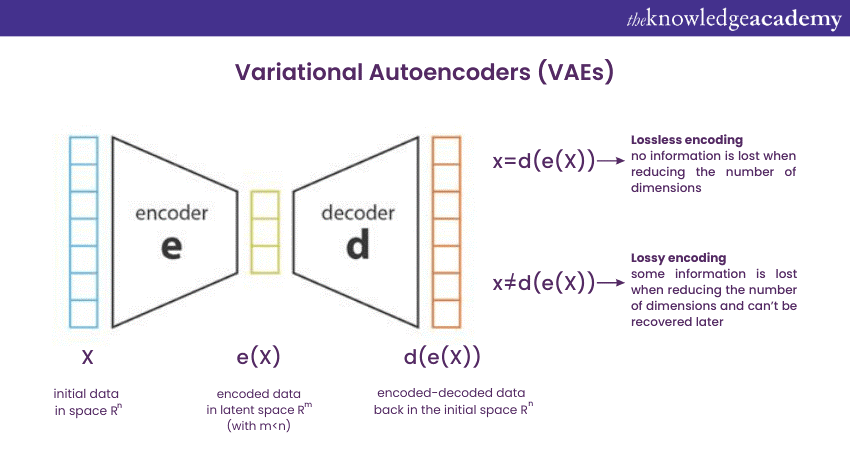
Variational Autoencoders (VAEs) can be defined as a type of generative model that focuses on encoding and decoding data. They are part of the family of autoencoders, neural networks used for unsupervised learning. A VAE works by first encoding input data into a latent (hidden) space, representing compressed knowledge of the data, and then reconstructing the input data from this space.
The strength of VAEs lies in their ability to produce new instances that are similar but not identical to the input data, making them excellent for tasks like image denoising, anomaly detection, and generating new data instances that retain the characteristics of the original dataset. Their probabilistic nature also measures the model's confidence in its generation, which is a valuable trait for many AI applications.
Are you interested in using the latest AI tools to boost productivity in your organisation? Register now for our Artificial Intelligence Tools Training!
Recurrent Neural Networks (RNNs)
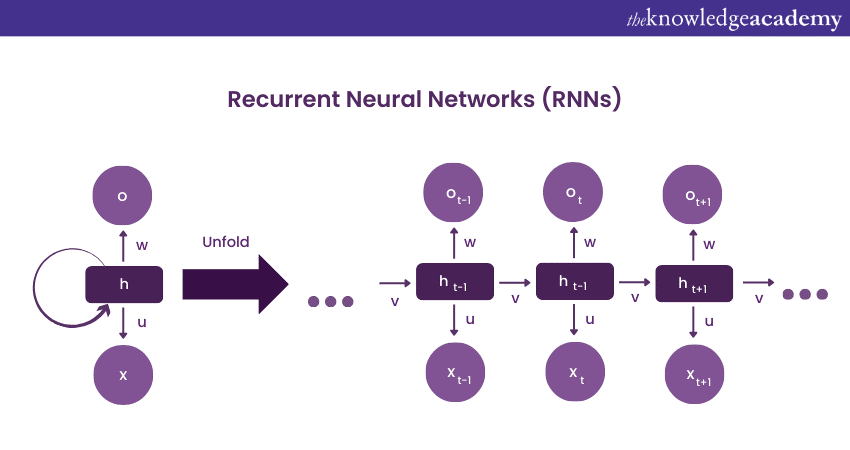
Recurrent Neural Networks (RNNs) are a specific type of neural network that is particularly adept at processing sequential data. This makes them ideal for tasks involving time series, speech, text, and audio. The defining feature of RNNs is their internal memory, which captures information about previous steps in the sequence. This allows them to make decisions based on the current input and the context provided by earlier inputs in the sequence.
However, traditional RNNs face challenges with long sequences due to the vanishing gradient problem, where the influence of information decreases over time. Variants like Long Short-Term Memory (LSTM) networks and Gated Recurrent Units (GRUs) were developed to address this. These models incorporate mechanisms to retain important information over long sequences while discarding irrelevant data, improving the network's ability to learn long-range dependencies.
Stay ahead in tech by downloading the Generative AI PDF. Unlock deep insights into generative AI and how it’s shaping the future.
Transformer-based models
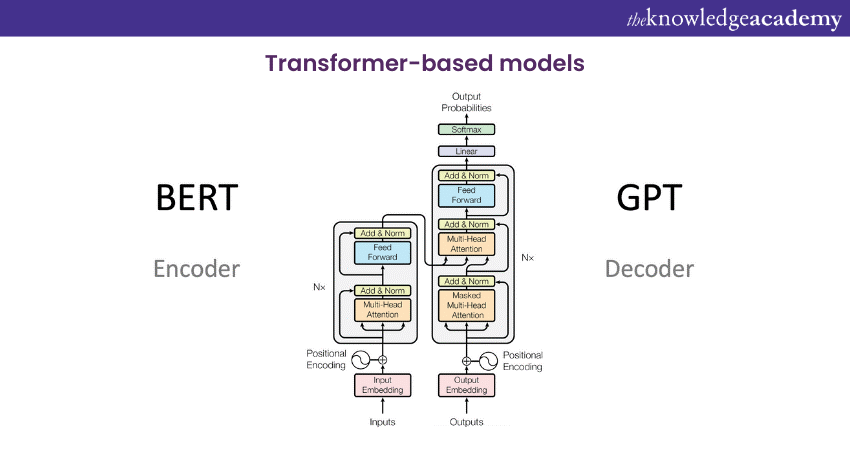
Transformer-based models represent a significant advancement in deep learning, especially for tasks involving sequential data like natural language processing. These models are distinguished by their use of self-attention mechanisms, which allow them to weigh the importance of various parts of the input data, leading to a more nuanced understanding and processing of sequences.
Transformers process entire sequences simultaneously, making them more efficient and better suited for parallel processing. This architecture has enabled breakthroughs in various applications, from language translation to text generation. The most famous example is the GPT (Generative Pre-trained Transformer) series, which demonstrates remarkable capabilities in generating human-like text.
Do you want to discover the transformative power of AI? Sign up now for our Generative AI For Operations Training Course!
Autoregressive models
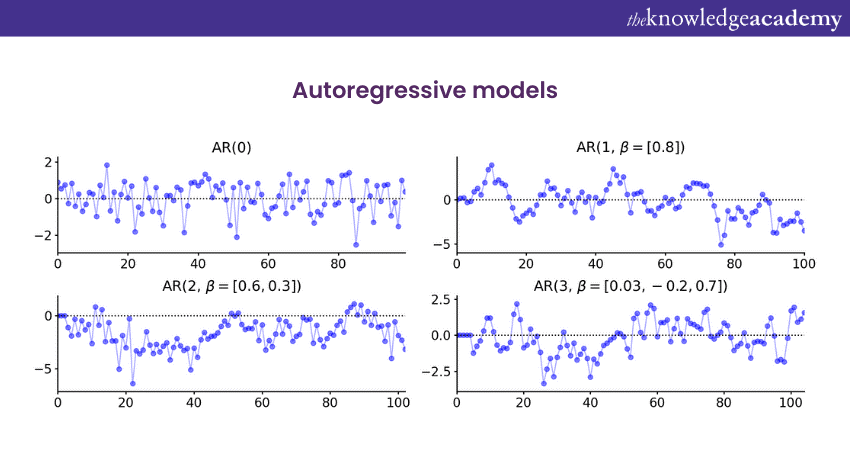
Autoregressive models are a class of statistical models used for predicting future values in a time series based on their past values. These models operate under the premise that past values have a linear relationship with future values. In the context of AI, particularly in generative tasks, autoregressive models have been adapted to predict the next element in a sequence, whether it be the next word in a sentence, the following note in a piece of music, or the next pixel in an image.
These models have been widely used in various applications, including natural language processing, speech synthesis, and time-series forecasting. They are known for their ability to capture and model sequences' temporal dynamics effectively. However, their sequential nature can be a limitation for large-scale or complex sequences, where processing speed becomes critical.
Reinforcement learning for generative tasks
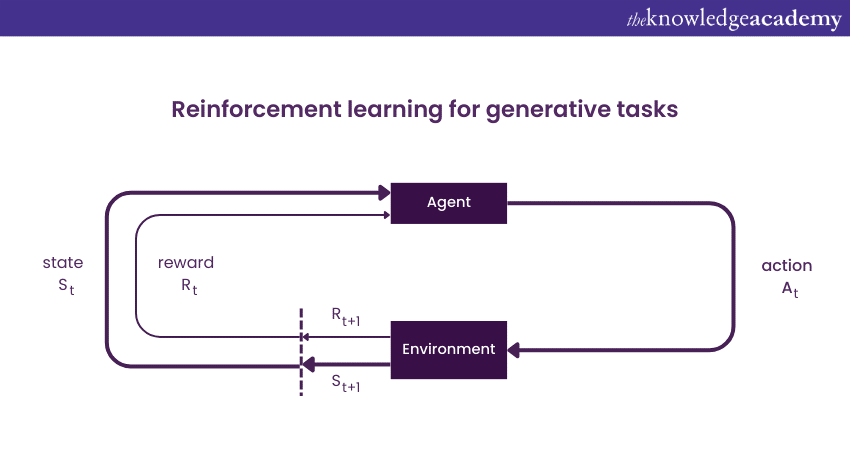
Reinforcement Learning (RL) in the context of generative tasks offers a unique approach where the model learns to make decisions by performing actions to achieve a goal. Unlike supervised learning, where learning is based on a set of labelled data, RL is driven by agents learning from the consequences of their actions and receiving rewards or penalties based on their performance.
RL for generative tasks has seen applications in areas such as automated game-level design, where the model learns to create engaging and playable levels, and drug discovery, which helps design new molecular structures. The key advantage of using RL in these contexts is its ability to continuously improve and adapt the generation process based on feedback, leading to increasingly effective and optimised outcomes.
In generative tasks, RL can be applied to train models to generate better outputs by defining the generation process as a series of actions. For example, in content creation, each piece of content produced by the model can be seen as an action, and the quality or usefulness of the content determines the reward. This setup encourages the model to produce high-quality, novel, and relevant outputs, as these are associated with higher compensations.
Learn to empower your Data Analysis skills with our Generative AI For Data Analyst Training Course!
Conclusion
We hope that you have understood the different Types of Generative AI to help you deepen your knowledge of Generative AI. The types of Generative AI range from GANs and VAEs to Transformer models and RNNs, each offering unique strengths in generating new, creative content. These models leveraged advanced AI techniques and reshaped fields like art, language processing, and data analysis, highlighting the transformative potential of AI in creative and analytical domains.
Do you want to transform your Cloud expertise with AI? Register now for our Generative AI For Cloud Professional Training Course!
Frequently Asked Questions
What are the Other Resources and Offers Provided by The Knowledge Academy?

The Knowledge Academy takes global learning to new heights, offering over 3,000 online courses across 490+ locations in 190+ countries. This expansive reach ensures accessibility and convenience for learners worldwide.
Alongside our diverse Online Course Catalogue, encompassing 19 major categories, we go the extra mile by providing a plethora of free educational Online Resources like News updates, Blogs, videos, webinars, and interview questions. Tailoring learning experiences further, professionals can maximise value with customisable Course Bundles of TKA.
Upcoming Data, Analytics & AI Resources Batches & Dates
Date
 Generative AI Course
Generative AI Course
Fri 28th Feb 2025
Fri 4th Apr 2025
Fri 27th Jun 2025
Fri 29th Aug 2025
Fri 24th Oct 2025
Fri 5th Dec 2025






 Top Rated Course
Top Rated Course



 If you wish to make any changes to your course, please
If you wish to make any changes to your course, please


